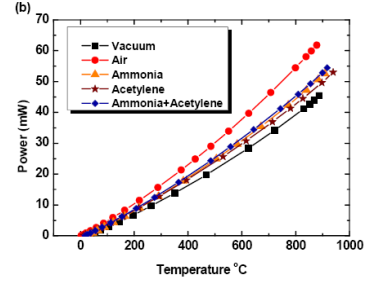Wet-etching with an organic alkaline solution was monitored in situ in semi-real time by optical reflflection spectroscopy to achieve high resolution thickness control of hydrogenated amorphous silicon (a-Si:H) film for use in wire waveguides. Isotropic etching resulting from the intrinsic isotropic structure of a-Si:H led to uniform etching with a surface roughness of <1 nm. A moderate etching rate enabled accurate endpoint detection with a resolution of ≤1 nm at room temperature. A wire waveguide made of the etched a-Si:H fifilm had a low propagation loss of 1.2 dB/cm, which was almost equivalent to that of an unetched one.
Partial replacement of global metallic wiring by optical waveguides made of silicon materials is expected to realize faster signal transmission and greater energy savings in large scale integrated devices. Silicon materials enable low-cost fabrication of ultra-small optical circuits with sizes comparable to those of electrical wiring circuits because of their high refractive indices and complementary metal oxide semiconductor (CMOS) process compatibility. Among silicon materials, hydrogenated amorphous silicon (a-Si:H) is a promising example because it allows successive formation of silicon waveguides on existing electric layers by low temperature plasma-enhanced chemical vapor deposition (PECVD). To date, several groups have fabricated high quality wire waveguides using a-Si:H materials.
However, the PECVD process used to grow a-Si:H films typically produces deviations in film thickness of 65%. This deviation corresponds to 610 nm for a film with a thickness of 200 nm, which is unacceptable for many device applications, especially those that are wavelength sensitive. Hence, an additional process to give accurate thickness control with nanometer-scale resolution is required after PECVD. Chemical mechanical polishing (CMP) has been used to adjust the thickness of a-Si:H films.1–3 However, it is usually difficult to detect the endpoint of CMP with high accuracy. In this letter, as an alternative method to CMP, we report the utility of a wet-etching method used in combination with a semi-real time optical thickness monitor to give fine thickness control with a resolution of ~ 1 nm. This method does not signifi- cantly increase the surface roughness of as-deposited a-Si:H films, enabling fabrication of a wire waveguide with a low propagation loss oF~ 1 dB/cm.

Fig1
The surface roughness before and after etching at room temperature was evaluated using the tapping mode of an atomic force microscope.8 The root-mean-square surface roughness of the film was 0.739 nm before etching and 0.891 nm after etching which was stopped at a film thickness of 220 nm. Thus, there was only slight increase in the surface roughness even after ~ 100 nm of the film was removed by etching. Consistent results were obtained for several points on the film.
In conclusion, a wet-etching method using TMAH solution and semi-real time in situ thickness monitoring by optical reflection spectroscopy was developed to realize high resolution thickness control of a-Si:H film deposited by PECVD. Because of the combination of a moderate etching rate of ~4 nm/min at room temperature and the measurement response time of ~ 2 s, the endpoint of etching could be controlled with a resolution of ≤1 nm. The surface roughness of the film was increased only slightly even after ~100 nm of the film was removed by etching. The propagation loss of a wire waveguide made of the etched a-Si:H film was almost equivalent to that of the non-etched one and is the lowest reported to date. The developed etching method can be used to produce low propagation loss waveguide devices and has excellent compatibility with CMOS processes.